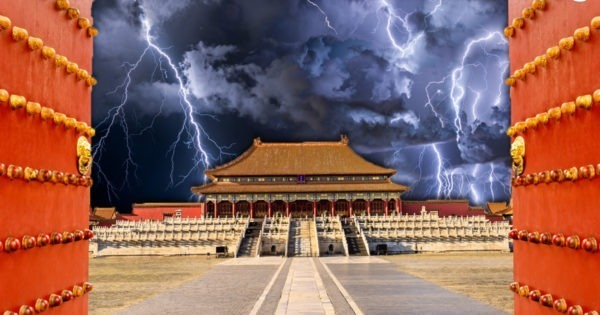
The Communist Chinese govern has announced it plans to radically expand its experimental weather modification project. Their goal is to achieve the ability to affect the weather over a 2.1 million square mile area, an area one and a half times the size of their regional foe, India.
According to a statement released by the State Council of the People’s Republic of China, the Communist nation will have a “developed weather modification system” by 2025. They attribute the ability to reach this benchmark to breakthroughs in research and key technologies, as well as advances in “comprehensive prevention against safety risks.”
The Communist Chinese has sought to control the weather since the days of Mao Zedong, who passive-aggressively mandated the pursuit of the technology.
The announced purpose of the project us to protect farming areas and to ensure favorable weather for key events the nation hosts. The Chinese government seeded clouds ahead of the 2008 Beijing Olympics in an effort to reduce smog and avoid rain ahead of the competitions.
Attendees and observers have noted that during key geo-political meetings held in Beijing, the weather always afforded beautiful clear skies. This was the product of China’s weather modification efforts in tandem with the shutting down of nearby factories.
The official statement continued on to say that over the next five years, the area covered by artificially produced rain or snowfall will reach 3.41 million square miles, while over 224,000 square miles will see the employment of hail suppression technologies.
The official Chinese State narrative is that the project will aid in disaster relief, agricultural production, large-scale emergency responses to forest and grassland fires, and dealing with unusually high temperatures and/or droughts.
An academic research paper authored by researchers at National Taiwan University last year, said the “lack of proper coordination of weather modification activity (could) lead to charges of ‘rain stealing’ between neighboring regions,” both within China and with other countries in the region.
They research paper also noted the complete lack of a “system of checks and balances to facilitate the implementation of potentially controversial projects.”
India and China, who have historically held each other at odds, and whose populations are both over one billion people, recently faced off along their shared and hotly contested border in the Himalayas. The enemy neighbor nations engaged in their bloodiest confrontation in decades.
It is because of their adversarial relationship that some in the Indian government speculate that Communist China’s weather modification project is actually more for the military use and less for their domestic initiatives.
Indian military leaders suggest that China’s weather modification abilities could potentially give that country the edge in a future conflict, given the importance of ground conditions to troop movements in the rough-terrain mountain region.